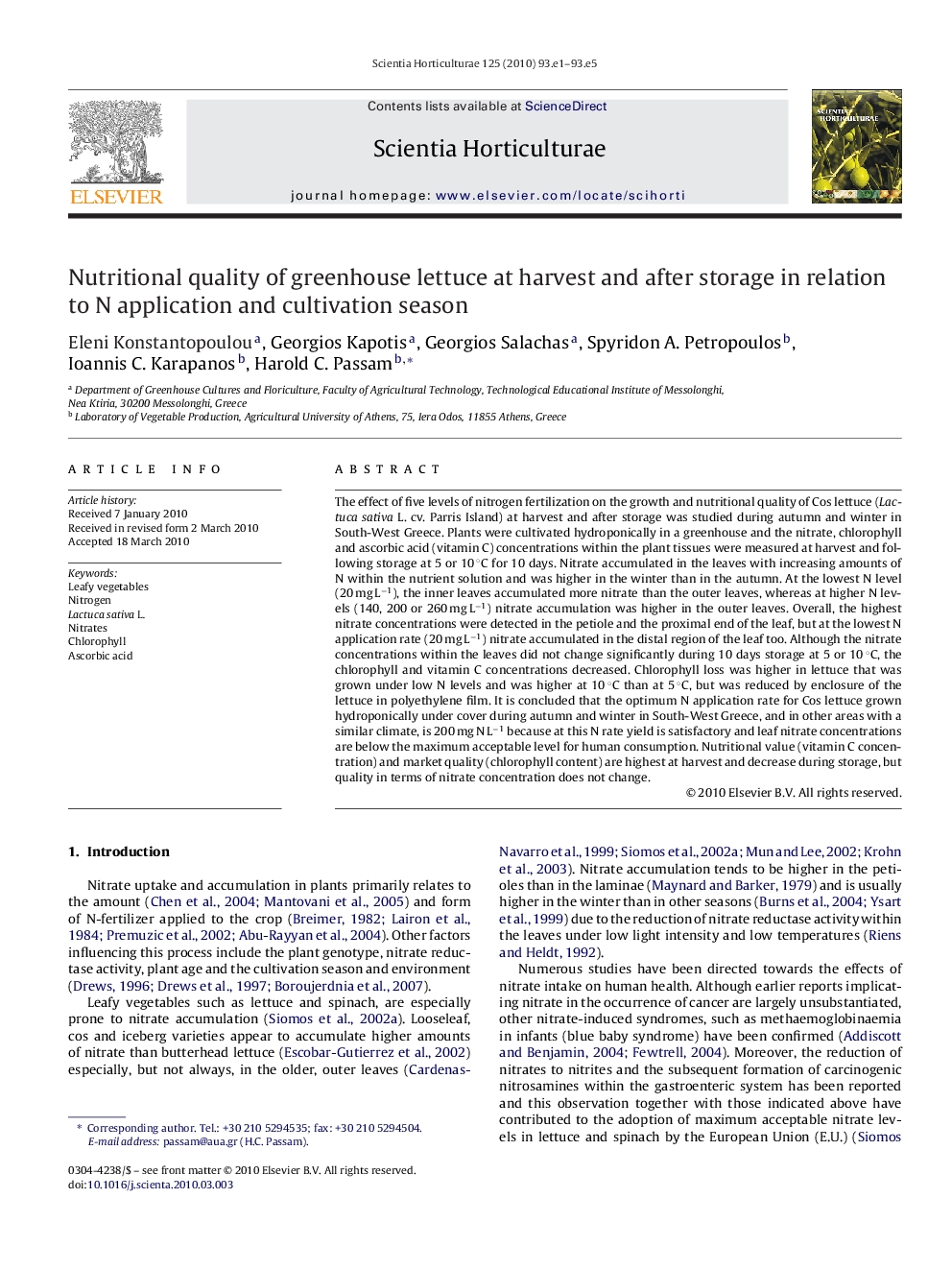| کد مقاله | کد نشریه | سال انتشار | مقاله انگلیسی | نسخه تمام متن |
|---|---|---|---|---|
| 4568771 | 1331312 | 2010 | 5 صفحه PDF | دانلود رایگان |
عنوان انگلیسی مقاله ISI
Nutritional quality of greenhouse lettuce at harvest and after storage in relation to N application and cultivation season
دانلود مقاله + سفارش ترجمه
دانلود مقاله ISI انگلیسی
رایگان برای ایرانیان
کلمات کلیدی
موضوعات مرتبط
علوم زیستی و بیوفناوری
علوم کشاورزی و بیولوژیک
دانش باغداری
پیش نمایش صفحه اول مقاله

چکیده انگلیسی
The effect of five levels of nitrogen fertilization on the growth and nutritional quality of Cos lettuce (Lactuca sativa L. cv. Parris Island) at harvest and after storage was studied during autumn and winter in South-West Greece. Plants were cultivated hydroponically in a greenhouse and the nitrate, chlorophyll and ascorbic acid (vitamin C) concentrations within the plant tissues were measured at harvest and following storage at 5 or 10 °C for 10 days. Nitrate accumulated in the leaves with increasing amounts of N within the nutrient solution and was higher in the winter than in the autumn. At the lowest N level (20 mg Lâ1), the inner leaves accumulated more nitrate than the outer leaves, whereas at higher N levels (140, 200 or 260 mg Lâ1) nitrate accumulation was higher in the outer leaves. Overall, the highest nitrate concentrations were detected in the petiole and the proximal end of the leaf, but at the lowest N application rate (20 mg Lâ1) nitrate accumulated in the distal region of the leaf too. Although the nitrate concentrations within the leaves did not change significantly during 10 days storage at 5 or 10 °C, the chlorophyll and vitamin C concentrations decreased. Chlorophyll loss was higher in lettuce that was grown under low N levels and was higher at 10 °C than at 5 °C, but was reduced by enclosure of the lettuce in polyethylene film. It is concluded that the optimum N application rate for Cos lettuce grown hydroponically under cover during autumn and winter in South-West Greece, and in other areas with a similar climate, is 200 mg N Lâ1 because at this N rate yield is satisfactory and leaf nitrate concentrations are below the maximum acceptable level for human consumption. Nutritional value (vitamin C concentration) and market quality (chlorophyll content) are highest at harvest and decrease during storage, but quality in terms of nitrate concentration does not change.
ناشر
Database: Elsevier - ScienceDirect (ساینس دایرکت)
Journal: Scientia Horticulturae - Volume 125, Issue 2, 3 June 2010, Pages 93.e1-93.e5
Journal: Scientia Horticulturae - Volume 125, Issue 2, 3 June 2010, Pages 93.e1-93.e5
نویسندگان
Eleni Konstantopoulou, Georgios Kapotis, Georgios Salachas, Spyridon A. Petropoulos, Ioannis C. Karapanos, Harold C. Passam,